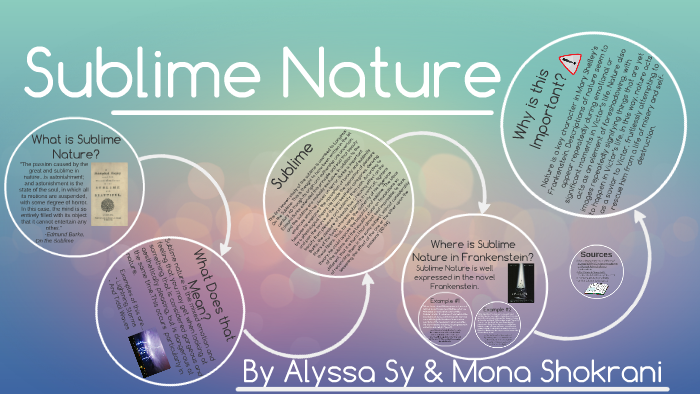


One does find in Gothic literature a dialectic between the Burkean model of endangered subjectivity, and Kantian or idealist belief in the power of the mind to sublime, to rise victorious over opposition to the reach of the imagination. (Indeed, in language that recalls Wordsworth's sublime mountain ascents, Kant speaks of the mind usurping upon nature during these visionary moments. In essence for Kant, the sublime is not so much located in the direct experiencing of a terrific object but in the way that experience signals an apprehension of the infinite capacities of the mind's imaginative powers. In his Critique of Judgement (1790), Kant treats the sublime as a heightened and ennobled capacity of thinking which enables the mind to rise above its physical limitations after an initial check to its vital forces. Passion and fancy cooperating elevate the soul to its highest pitch and the pain of terror is lost in amazement" ("On the Pleasure Derived from Objects of Terror" ). Anna Letitia Aikin (later Barbauld) and John Aikin follow Burke's lead but go a step further in proclaiming a positive "pleasure" to be derived from the sublime in ways that anticipate later romantic theorists: "A strange and unexpected event awakens in the mind, and keeps it on the stretch and where the agency of invisible beings is introduced, of 'forms unseen, and far mightier than we,' our imagination, darting forth, explores with rapture the new world which is laid open to its view, and rejoices in the expansion of its powers. Burke's insistence on framing and distancing the sublime moment helped shape a Gothic aesthetic in which obscurity, suspense, uncertainty, ambivalence, and play attend presentations of terror. ) The threat must not be direct, else "delight" (a lesser form of literary "pleasure") cannot be experienced from the sublime moment. "Samuel Monk's study of the sublime argues that the term became a repository for all the emotions and literary effects unacceptable to the dominant Neoclassical virtues of balance, order and rationality" (Milbank).Įdmund Burke locates the sublime purely in terms of fear, the source of which is the "king of terrors" himself- Death- and a sense of possible threat to the subject's self-preservation: "In essence, whatever is fitted in any sort to excite the ideas of pain, and danger, or is conversant about terrible objects, or operates in a manner analogous to terror, is a source of the sublime it is productive of the strongest emotion which the mind is capable of feeling" (A Philosophical Enquiry into the Origin of Our Ideas of the Sublime and the Beautiful. Longinus also foreshadows the development of the sublime in England in his attention to the rhetorical effect of natural forces: "Nature impels us to admire not a small river that ministers to our necessities but the Nile, the Ister, and the Rhine." Longinus believes that power is the essence of the sublime style, as it literally moves or transports its hearers, and he offers among many examples a rare reference to the Hebrew scriptures, Genesis 1:3, "And God said, Let there be light and there was light." This is an example of the absolute power in which word and effect are one. Always a contested term, the idea of the sublime is essential to an understanding of Gothic poetics and, especially, the attempt to defend or justify the literature of terror. The definition of this key term has evolved from the early days of Longinus through to various 18th and 19th century formulations.


 0 kommentar(er)
0 kommentar(er)
